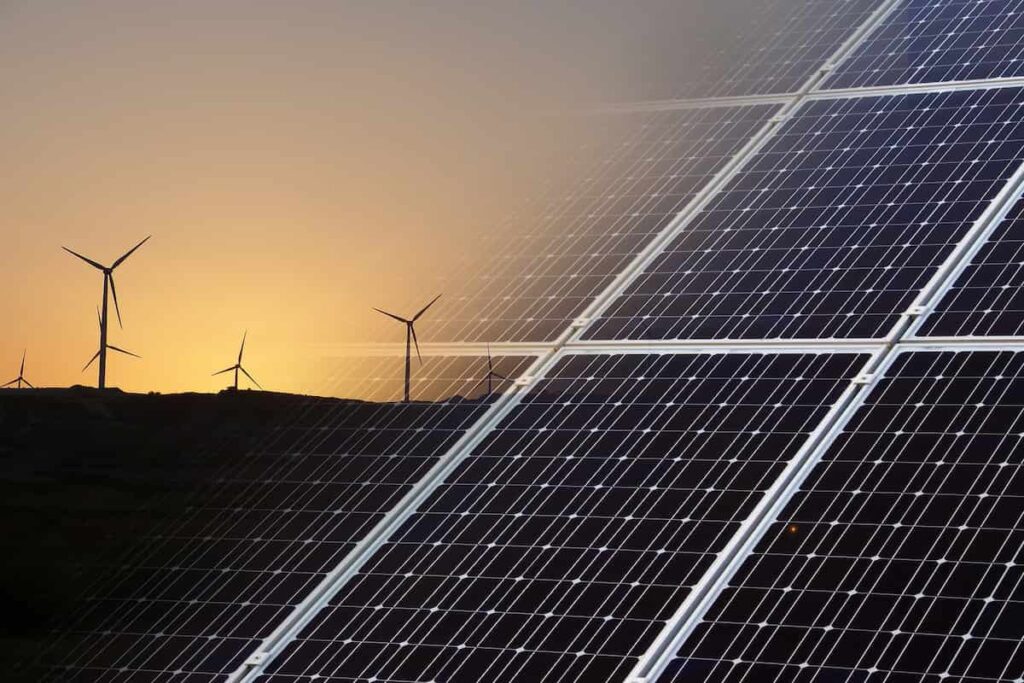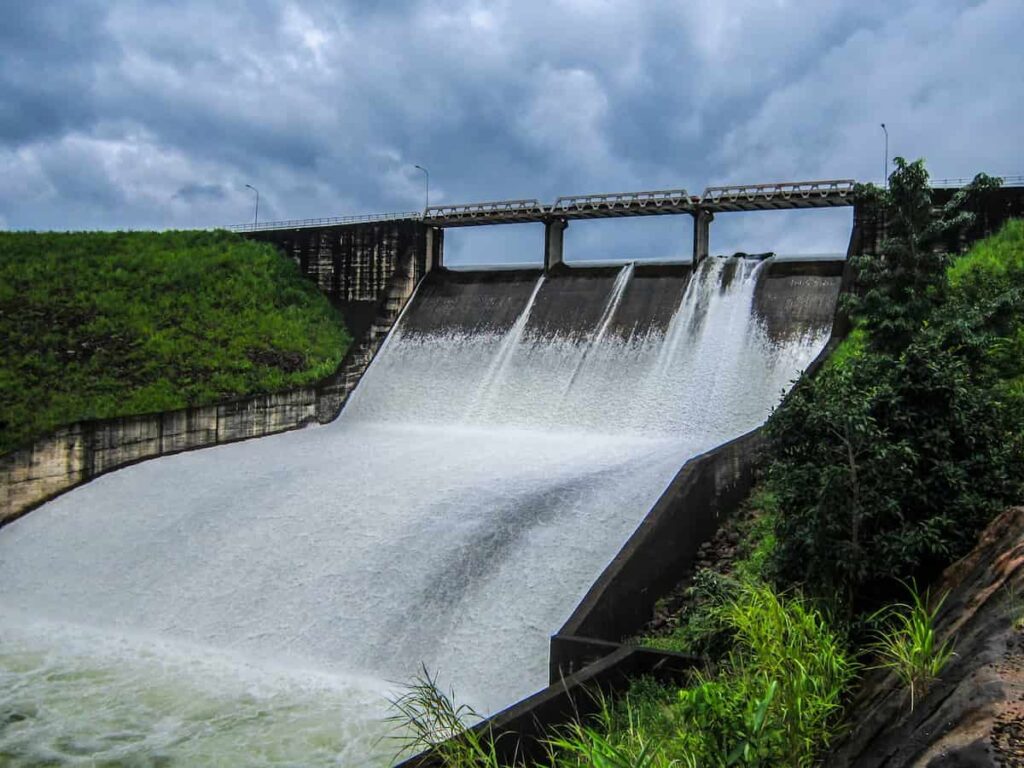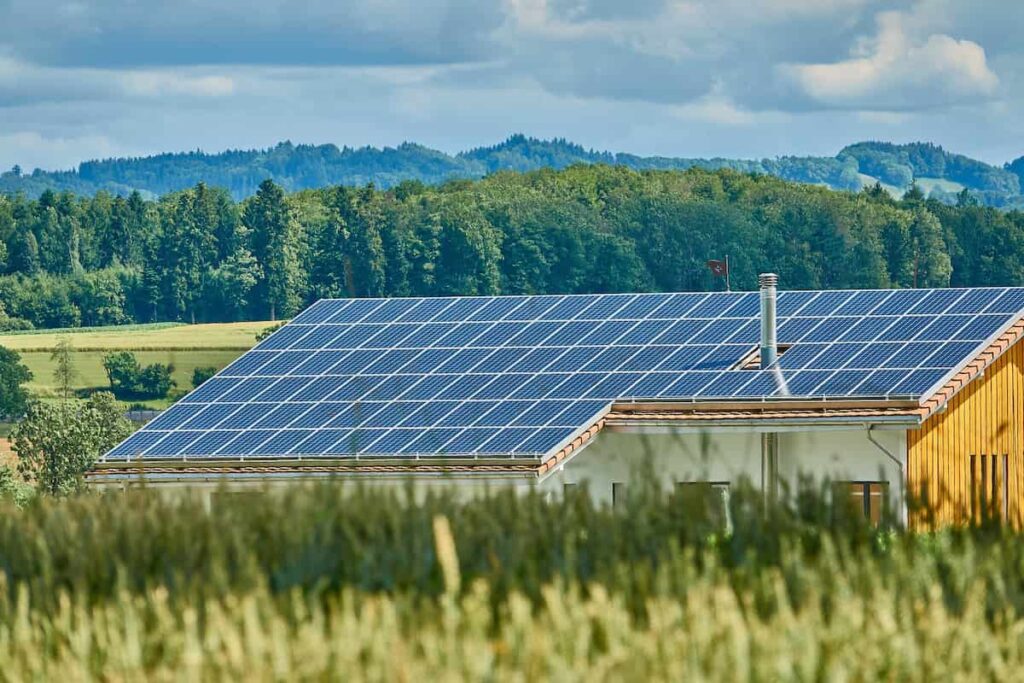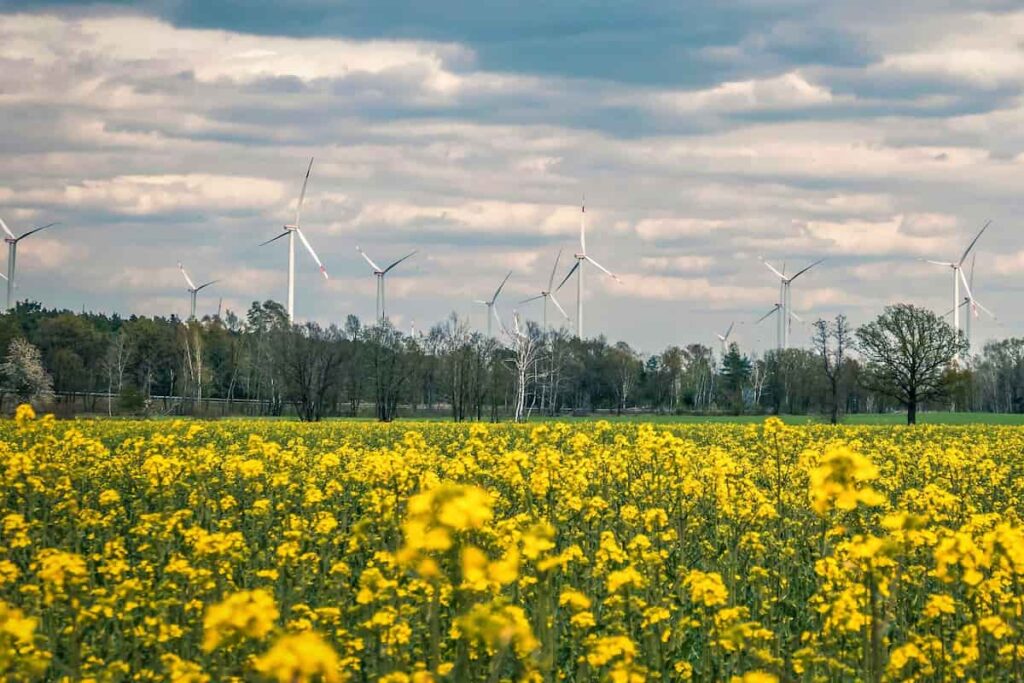Agriculture significantly contributes to greenhouse gas emissions – but it doesn’t have to be. With the right technology, farmers can use renewable energy to power their operations and significantly reduce their carbon footprint. This blog post will explore how agriculture can be powered by renewable energy. We will discuss the benefits of renewable energy for agriculture and the challenges or difficulties that need to be addressed to make this transition.

Powering agriculture with renewable energy in India
The Problem with agricultural energy use
Fossil fuels in agriculture are a major contributor to greenhouse gas emissions. In the United States, agricultural energy use accounts for about 5% of total energy consumption. Most of this energy is used for crop production, with the rest going towards livestock production, farm machinery, and other on-farm uses. While many renewable energy options available could be used to power agriculture, fossil fuels still dominate the sector.
This is mainly due to several factors, including the high upfront cost of investing in renewable energy infrastructure, the lack of government support for renewable energy development in agriculture, and the entrenched interests of the agrochemical and industrial agriculture industries. As a result of these factors, agricultural energy use is likely to stay mostly the same for a while. Unfortunately, agricultural greenhouse gas emissions will continue to rise unless other steps are taken to reduce them.
The benefits of renewable energy for agriculture
The agricultural/farming sector is one of the most energy-intensive industries in the world. According to the International Energy Agency, the agricultural sector accounted for 10 percent of global final energy consumption in 2012. Renewable energy can help agriculture meet its energy needs more sustainably. Here are some benefits of using renewable energy for agriculture:
- Renewable energy is a cleaner source of energy than fossil fuels.
- Renewable energy can help reduce greenhouse gas emissions from agriculture.
- Renewable energy can provide a hedge against volatile fossil fuel prices.
- Renewable energy can help improve farm productivity and profitability.
- Renewable energy can create new jobs and economic opportunities in rural communities.
In case you missed it: How to Grow Eggplants in Raised Beds: Step-by-Step Guide to Planting and Care

What are the top 5 renewable energy sources?
- Solar energy is one of the most commonly used renewable energy sources, and for a good reason. Solar panels can generate electricity, providing a clean, renewable power source for agricultural operations.
- Wind energy is another popular renewable energy source for agriculture. Wind turbines will be used to generate electricity and can also be used to pump water or power other agricultural machinery.
- Hydroelectricity is a third renewable energy source that can be used in agriculture. Hydroelectric dams can provide a steady source of electricity, which can be used to power irrigation pumps or other farm equipment.
- Geothermal energy is another option for powering agricultural operations. These power plants use the heat from the earth’s interior to generate electricity, which can then be used to run farm equipment or heat greenhouses.
- Biomass is a final renewable energy source that can be used in agriculture. This Biomass can be converted into heat and electricity, making it a versatile option for powering farm buildings and machinery.
Use of renewable energy in agriculture in India
As the world’s population continues to grow, the demand for food will only increase. To meet this demand, agriculture must become more efficient and sustainable. One way to do this is by powering agriculture with renewable energy. In India, over 70% of the population is employed in the agricultural sector. However, the sector only contributes to 14% of the GDP. This is partly because much of Indian agriculture is rain-fed and thus vulnerable to climate change. As a result, droughts are common and can devastate crop yields.
To make Indian agriculture sector more resilient to climate change, the government has been promoting using renewable energy in agriculture. One way and the best options is through the Pradhan Mantri Kisan Urja Suraksha evam Utthaan Mahabhiyaan (PMKUSUM) scheme. PMKUSUM aims to provide solar pumps to farmers so that they can irrigate their fields with renewable energy.
The scheme also provides for installing rooftop solar panels on farm buildings so that farmers can generate their electricity. The use of renewable energy in agriculture not only helps make it more resilient to climate change but also more efficient and sustainable. Solar pumps require far less water than traditional pumps, and rooftop solar panels can provide a significant source of income for farmers as they sell surplus electricity back to the grid.
In case you missed it: Crop Insurance Role in Driving Smart Digital Agriculture in Africa

How to Implement Renewable Energy in Agriculture
Renewable energy is a key piece of the puzzle regarding addressing climate change and ensuring a sustainable future for agriculture. There are many ways to incorporate renewable energy into agricultural operations, from on-farm solar and wind power generation to biogas from farm waste as a fuel source.
Using on-farm solar panels to generate electricity is one way to start incorporating renewable energy into agriculture. Solar power can run farm equipment, lights, and pumps and be sold back to the grid for income. Wind turbines are another option for generating electricity on the farm and can often be paired with solar panels to provide a steadier power supply.
Another way to make use of renewable energy in agriculture is through anaerobic digestion, which is a process that breaks down organic matter like manure and food waste in the absence of oxygen to produce methane-rich biogas. This biogas can then be used as fuel for powering agricultural machinery or generating electricity. Not only does this help reduce greenhouse gas emissions, but it also provides farmers with a valuable source of renewable energy.
There are many other ways to incorporate renewable energy into agricultural operations – these are just a few examples. With proper planning and implementation, renewable energy can play a significant role in powering agriculture and helping address climate change.
In case you missed it: Crop Insurance Role in Driving Smart Digital Agriculture in Africa

Case Studies of Renewable Energy in Agriculture
Renewable energy is an important tool for sustainable agriculture. Many case studies show farmers using renewable energy to power their farm operations. One example is a farm in California that uses a combination of solar, wind, and biogas to power the farm. As a result, this farm has significantly reduced its energy costs and carbon footprint. Another example is a farm in Wisconsin that uses manure from its dairy cows to generate methane gas.
This methane gas is used to power the farm’s milking robots, resulting in significant cost savings for the farm. There are many other examples of farms worldwide that are using renewable energy to power their operations. These case studies show that renewable energy can be viable for powering agriculture.
Role of Renewable Energy in Agriculture
Renewable energy is an essential part of powering agriculture. It can help reduce reliance on fossil fuels and provide farmers with a more sustainable and environmentally friendly option for powering their operations. Several types of renewable energy can be used in agriculture, including solar, wind, and hydropower. Each type of renewable energy has its benefits and drawbacks, so it is important to choose the right one for your specific needs.
For example, solar power is an excellent option for agriculture because it is readily available and can power homes and farms. Wind power is another superb option for agriculture, but it requires more land than solar power. Hydropower is yet another option for powering agriculture, but it requires access to a water source.
In case you missed it: Key Rules for Home Gardening in India

Which renewable energy is best for agriculture?
There are many types of renewable energy, each with its advantages and disadvantages. Solar, wind, and hydropower are all popular choices for powering agriculture. But which one is best? Solar power is an excellent option for agriculture because it is relatively cheap and easy to set up. In addition, solar panels can be placed on rooftops or in open fields, making them easy to implement. And, since they rely on sunlight to generate power, they can be used in any location.
Wind power is another popular choice for agriculture. Like solar, it is relatively cheap and easy to set up. In addition, wind turbines can be placed in open fields with enough space. They also have the advantage of being able to generate power even when there is no sun shining. Hydropower is a third option for powering agriculture. Hydroelectric dams can provide a reliable source of energy that can be used to run irrigation systems or other farm equipment. However, hydropower can be expensive to build and maintain, requiring a large amount of space.
In case you missed it: Factors Affect Seed Germination: Germination Stages: Process, Types, Tips for Successful Seed Germination

How can solar energy be used in agriculture?
Solar energy is used in agriculture in a variety of ways. Farmers can use solar panels to power their homes and farm buildings, providing clean, renewable energy. Solar water pumps are used for irrigation systems, using less energy than traditional pumps. Solar-powered dryers can be used to dry crops, saving energy and money.
Conclusion
The agricultural sector is a significant contributor to greenhouse gas emissions, but it doesn’t have to be this way. Many renewable energy technologies can be used to power agriculture, and many farmers are already beginning to adopt these technologies. With the right policies in place, we can speed up the transition to renewable energy in agriculture and make a big dent in global emissions.
- Profitable Village Farming Business Ideas in 2024
- High-Yield Aquaculture: Fast-Growing Fish for Farming
- Effective Fish Pond Construction Techniques for Beginners
- Irrigation and Water Management in Pineapple Farming
- Blossom to Harvest: Mastering Flowering and Pollination in Papaya Farming
- Pig Fattening Essentials: From Selection to Sale for Beginners
- Raising Wagyu Cattle: A Complete Guide for Premium Beef Production
- Soil Types and Their Water Holding Capacity
- Optimizing Irrigation Schedules for Coconut Groves for Enhanced Yield
- Espresso Your Garden: Coffee Grounds for Healthier Acid-Loving Plants
- The Best Soil Mix for Snake Plants: How to Mix Your Own Snake Plant Soil
- Green Thumb Success: Expert Tips for Cultivating Greenhouse Beans All Year Round
- Bloom All Year Round: The Ultimate Guide to Indoor Hyacinth Care
- Eco-Friendly Gardening: How to Make Liquid Fertilizer from Kitchen Waste
- Ultimate Guide to Grow Anise in Pots: Explore Seed Propagation to Harvesting
- Guide to Raising Chester White Pigs: Discover Breed Facts to Growth Management
- Mastering the Elegance: The Ultimate Guide to Weeping Cherry Tree Care, Planting, and Maintenance
- Ultimate Guide to Planting Garlic in Grow Bags: Growing Strategies for Beginners
- How to Fix Spider Plant Leaf-Related Problems: Natural and Organic Remedies
- 10 Reasons Why Your Tulsi Plant is Shedding Leaves: Home Remedies and Solutions
- Optimizing Growth and Yield: The Advantages of Palm Bunch Ash Fertilizer
- Utilizing Neem Oil Extract as a Natural Pesticide for Hydrangea
- From Soil to Harvest: Various Ways in Which Farmers Can Use AI Tools
- Steps to Encourage and Induce Citrus Flowers: A Comprehensive Guide
- How to Fix Snake Plant Leaf-Related Issues: Natural and Organic Remedies
- Transform Your Garden into a Fragrant Oasis with Raat Ki Rani (Night Blooming Jasmine)
- Discover the Ideal Chicken Breeds for Philippine Farms
- How to Create a Poultry Egg Farm Business Plan for Profits
- Grow Lemon Cucumbers Like a Pro: Insider Techniques for Bountiful Yields
- Ultimate Guide to Caring for Your Pink Princess Philodendron: Tips for Thriving Variegation
- Areca Nut Profit Per Acre: Calculating Yield and Cost of Cultivation
- How Kaveri Chicken is Becoming a More Profitable Breed in Indian Backyards
- Transform Your Barn: 9 Steps to Convert a Horse Stall into a Chicken Coop
- Exploring Suffolk Sheep Disadvantages with Limitations and Challenges
- Guide to Solving Potted Lemon Tree Problems: How to Revive Lemon Tree in Containers
- Steps to Encourage Female Pumpkin Flowers: Best Strategies for More Flowers and High Yields
